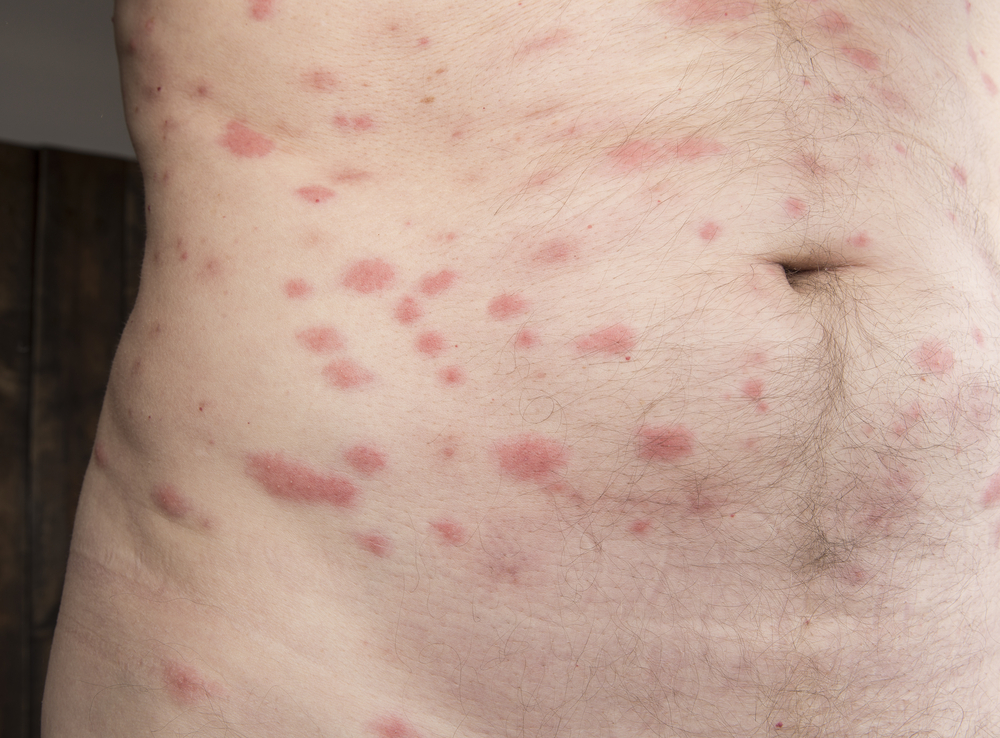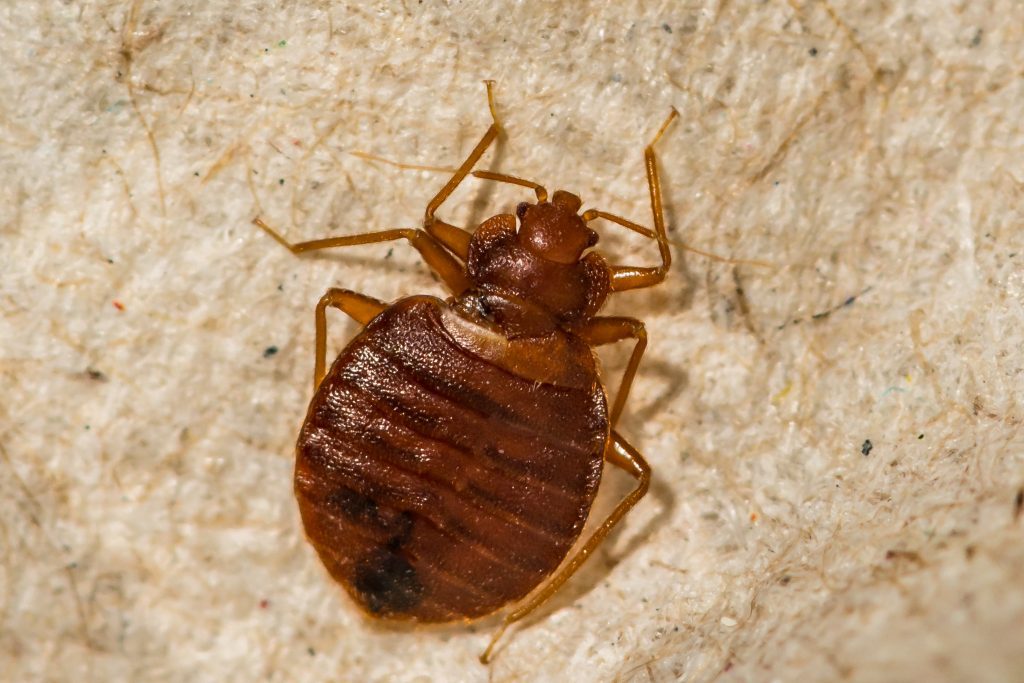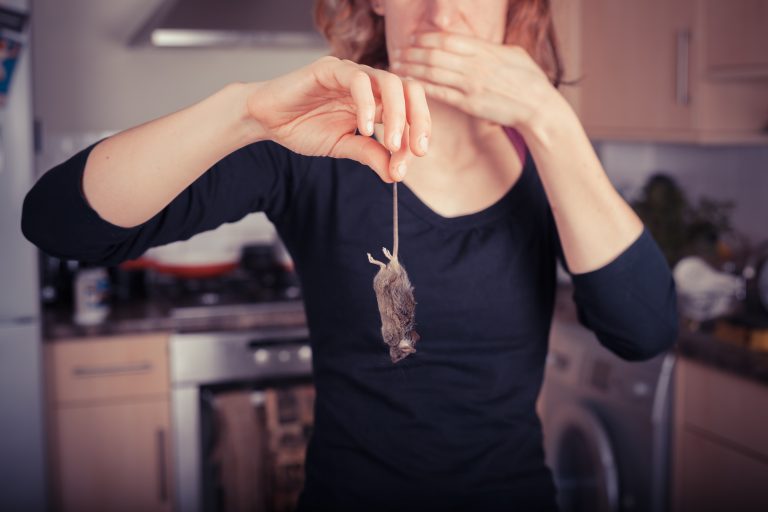Oklahoma bugs that bite
There are several types of bugs that can bite in Oklahoma. The black widow spider, known for its distinctive hourglass marking and venomous bite, is one of the most dangerous arachnids in the area. Symptoms of a black widow spider bite include severe pain, muscle cramps, and nausea, and it requires immediate medical attention. Some of the most common ones include mosquitoes, ticks, and fleas. These insects can transmit diseases such as the West Nile virus, Lyme disease, and RMSF. It’s important to take precautions to protect yourself from these pests, such as using insect repellent and wearing long sleeves and pants when outdoors. If you are bitten by a bug and experience symptoms such as fever, rash, or muscle aches, be sure to contact your healthcare provider for further evaluation and treatment.

What happens if you get bit by an assassin bug? Seek medical attention immediately.
Assassin bugs, also known as kissing bugs, are blood-sucking insects that can bite humans. These bites can be painful and can cause redness and swelling at the bite area. In some cases, the bite can also lead to allergic reactions. In rare cases, assassin bug bites can transmit a parasitic disease called Chagas disease. Symptoms of Chagas disease can include fever, fatigue, body aches, and swelling around the eyes. If you believe you have been bitten by an assassin bug and are experiencing symptoms, it’s important to contact your healthcare provider for further evaluation and treatment.
What state has the least bug problems?

It is difficult to say which state has the least bug problems, as the prevalence of different types of bugs can vary depending on a variety of factors such as climate, vegetation, and human activity. However, some states may generally have fewer issues with certain types of bugs due to their geographic and climatic characteristics. For example, states with colder climates, such as Alaska, may have fewer problems with mosquitoes, which thrive in warm and wet conditions. Similarly, states with dry climates, such as Arizona, may have fewer problems with ticks, which thrive in damp and wooded areas. It’s important to keep in mind that all states can have problems with pests at some point, and it’s always a good idea to take precautions to protect yourself from insect bites.
What bugs look like fleas but fly?
There are several types of insects that may resemble fleas but can fly. Some examples include:
- Sand flies: Sand flies are small, biting insects that are often found near water. They have a similar appearance to fleas, but they have wings and are able to fly.
- Biting midges: Biting midges, also known as no-see-ums, are small, flying insects that can bite humans and animals. They have a similar appearance to fleas, but they have wings and are able to fly.
- Bat bugs: Bat bugs are small, wingless insects that are closely related to bed bugs. They have a similar appearance to fleas, but they are not able to fly.
If you are unsure what type of insect you are dealing with, it’s always a good idea to contact a pest control professional for identification and advice on how to control the infestation.
What attracts water bugs in the house?
There are several factors that can attract water bugs, also known as cockroaches, into a house. These insects are drawn to moist, warm environments and can often be found in areas with a reliable source of water and food. Some common sources of attraction for water bugs include:
- Leaky pipes and plumbing fixtures
- Overflowing drains or gutters
- Standing water in basements or crawl spaces
- Pet food and water bowls
- Garbage cans and compost bins
- Clutter and debris that provides hiding places
To prevent water bugs from entering your home, it’s important to keep your living space clean and free of sources of attraction. This can include fixing any leaks, removing standing water, and properly storing food and garbage. It’s also a good idea to seal any cracks or gaps in the foundation of your home to prevent insects from entering. If you are already dealing with a water bug infestation, a pest control professional can help you identify and eliminate the source of the problem.
What is rocky mountain spotted fever?
Rocky Mountain spotted fever (RMSF) is a bacterial infection that is transmitted by ticks. It is most commonly found in the eastern and southeastern United States, but it can also occur in other areas where ticks are present. Symptoms of RMSF typically begin within 2-14 days after a tick bite and can include fever, headache, muscle pain, and a rash that starts on the wrists and ankles and spreads to the rest of the body. If left untreated, RMSF can be severe and even fatal. Treatment for RMSF typically involves antibiotics, and it is important to seek medical attention as soon as possible if you suspect you may have been infected. To prevent RMSF, it’s important to take precautions against tick bites, such as using insect repellent and wearing long sleeves and pants when outdoors.
The deadly brown recluse spiders
Brown recluse spiders are venomous spiders that are native to the central and southern United States. They are brown in color and have a distinctive violin-shaped markings on their backs. These spiders are shy and typically only bite if they are disturbed or threatened. Brown recluse spider bites can cause a range of symptoms, from mild to severe. The spider bite may be painless at first, but can eventually lead to redness, swelling, and intense pain. In some cases, the bite can also cause fever, chills, and muscle aches. If you suspect you have been bitten by a brown recluse spider, it’s important to seek medical attention as soon as possible. To prevent brown recluse spider bites, it’s important to avoid disturbing the spiders and to keep your living space free of clutter and debris where they can hide. If you look and you believe it is a spider bite, seek medical attention immediately, most people might get an allergic reaction where the spider bite took place.
Do bed bugs bite?
Yes, bed bugs do bite. Bed bugs are small, parasitic insects that feed on the blood of humans and animals. They are typically active at night when they will bite any exposed skin they can find in order to get a meal. Bed bug bites can be itchy and irritating, and they can sometimes cause allergic reactions in sensitive individuals. It’s important to take steps to prevent and control bed bug infestations to avoid being bitten.
Other insects and other species
The eastern velvet ant, also known as the cow killer ant, is a species of solitary wasp found in North America. It is a brightly colored, stout-bodied wasp that can reach up to 3/4 of an inch in length. The female velvet ant is wingless, but the male is winged. The female has a bright red or orange-red body, sometimes with black stripes or spots, and long black hairs. The male is mostly black with yellowish markings on the abdomen and head. The eastern velvet ant is not an ant, but instead is a species of wasp in the family Mutillidae. This species is known for its painful sting, which has been known to kill cows.
Blister beetle is a group of beetles that secrete a caustic chemical called cantharidin, which can cause skin blisters in humans. These beetles are found throughout most of the world and come in many sizes and colors. They feed on the leaves and flowers of plants and can be destructive agricultural pests.
Yellow jackets are a type of flying insect that are members of the family Vespidae. They are related to bees and wasps and are usually black and yellow in color. They are social insects that live in colonies, and they build nests out of paper-like material. Yellow jackets are known to be aggressive and will sting if they feel threatened. If you see a Yellow Jacket, do not swat at it they are not slow-moving and might attack you just like a bee would!
The American oil beetle (Meloe americanus) is a species of beetle in the family Meloidae. It is native to the United States and Mexico and is found in grasslands and woodland areas. The adults are black and have an oily secretion that is used to deter predators. The larvae are known as triungulins and are parasitic on the nests of bees, wasps, and ants. They feed on the eggs and larvae of their hosts.
Scorpion stings typically occur when individuals accidentally step on or handle these creatures. Scorpions are often found in dry, warm habitats such as deserts and arid regions. Symptoms of a scorpion sting can include pain, swelling, numbness, and in severe cases, difficulty breathing. To prevent scorpion stings, it is important to wear protective footwear and gloves when in scorpion-prone areas and to check bedding and clothing for scorpions before use.
Wasp stings are common during outdoor activities in the warmer months. These stings can cause pain, redness, and swelling, and in some cases, severe allergic reactions. To avoid wasp stings, it is advisable to keep food and drinks covered when outside, avoid wearing bright colors and strong perfumes, and stay calm if a wasp is nearby. If stung, clean the area and apply a cold pack to reduce swelling.
Spider mites are tiny arachnids that feed on the sap of plants. They are usually found in warm and dry climates and can live on both outdoor and indoor plants. They spin webs to protect themselves and their eggs and reproduce quickly. To control spider mites, it is important to identify the type of mite and then use the appropriate pesticides or physical means of removal.
Fire ants are a type of ant native to South America that is known for their aggressive behavior and painful sting. The most common species of the fire ant is the red imported fire ant (Solenopsis Invicta), which is an invasive species in many parts of the world. Fire ants are highly adaptive and can build large mounds in grassy areas and around trees. Fire ants can also infest buildings, and their stings can cause painful welts and even anaphylactic shock in some people. Fire ants can be controlled through chemical treatments, baits, or natural methods such as introducing natural predators.
Conclusion
As you see from this article on Oklahoma Bugs that bite either it being a wasp sting, paper wasp which isn’t necessarily a bite but feels like one. Our human skin sometimes takes for granted and we should not, please go see a doctor if you have been bitten or stung. Implementing prevention tips such as wearing protective clothing and using insect repellent can help avoid bug bites and stings. These insects are also a danger to animals and it is known that some bites do kill cattle.




Pingback: A Comprehensive Guide to Identify Animal Droppings: Tips and Tricks for Wildlife Enthusiasts - BugDaddyOK
Pingback: The Ultimate Animal Scat Identifier: A Comprehensive Guide to Wildlife Droppings - BugDaddyOK
Pingback: Pest Control vs Exterminator: Understanding the Key Differences for Effective Home Protection - BugDaddyOK